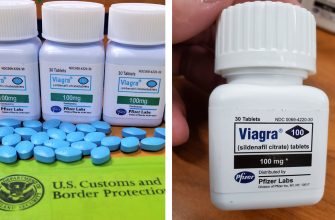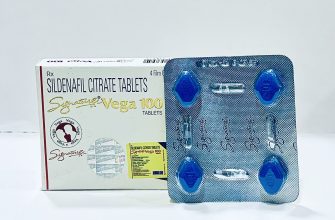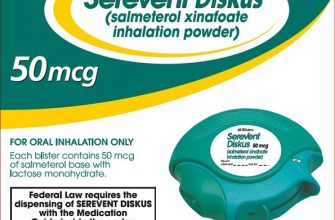Focus on the esterification reaction: Salicylic acid reacts with acetic anhydride, forming aspirin and acetic acid. This reaction requires a catalyst, usually sulfuric acid or phosphoric acid, to speed up the process significantly.
The catalyst protonates the acetic anhydride, making it a better electrophile. This activated anhydride then attacks the hydroxyl group of salicylic acid, initiating the esterification. A tetrahedral intermediate forms, which subsequently collapses, releasing acetic acid and producing acetylsalicylic acid (aspirin).
Careful temperature control is critical. Elevated temperatures accelerate the reaction but risk decomposition of aspirin. Monitoring the reaction with techniques like thin-layer chromatography (TLC) helps determine completion and optimize reaction time. Yield optimization involves factors like reagent purity and reaction conditions. A high yield reflects a well-executed synthesis.
Post-synthesis, recrystallization is key for purification. This removes impurities, resulting in higher purity aspirin. Successful synthesis hinges on precise execution of each step. Understanding the mechanism allows for troubleshooting and optimization, leading to a high-quality product.
- Synthesis of Aspirin Mechanism
- The Esterification Reaction
- Reaction Optimization
- Reactants and Their Roles
- Acetic Anhydride: The Acetylating Agent
- Sulfuric Acid: The Catalyst
- Esterification: The Core Reaction
- Reaction Conditions
- Mechanism Details
- Product Isolation
- Mechanism Steps: Acylation of Salicylic Acid
- Step 1: Nucleophilic Attack
- Step 2: Proton Transfer and Elimination
- Catalyst’s Function: Sulfuric Acid’s Role
- Side Reactions and Purification
- Recrystallization: A Key Purification Step
- Dealing with Impurities
- Purity Assessment
- Summary of Purification Steps
- Further Characterization
- Yield Calculation and Aspirin Purity Assessment
- Purity Assessment via Melting Point Determination
- Purity Assessment via Thin-Layer Chromatography (TLC)
Synthesis of Aspirin Mechanism
Aspirin synthesis involves a simple esterification reaction. You react salicylic acid with acetic anhydride in the presence of an acid catalyst, typically sulfuric acid or phosphoric acid. The acid catalyst protonates the acetic anhydride, making it a better electrophile. This activated anhydride then reacts with the hydroxyl group (-OH) on the salicylic acid.
The Esterification Reaction
The reaction mechanism proceeds through a nucleophilic acyl substitution. The hydroxyl group of salicylic acid acts as a nucleophile, attacking the carbonyl carbon of the protonated acetic anhydride. This forms a tetrahedral intermediate. A proton transfer then occurs, followed by the departure of acetic acid as a leaving group. The result is acetylsalicylic acid (aspirin) and acetic acid.
Reaction Optimization
Several factors affect the yield of aspirin. Maintaining a suitable reaction temperature (around 50-60°C) is crucial to avoid decomposition. The use of a sufficient amount of acetic anhydride ensures complete conversion of salicylic acid. Careful purification through recrystallization removes impurities, leading to a higher purity aspirin product. Monitoring the reaction progress is important; this can be done through thin layer chromatography (TLC) or melting point determination of the final product. Remember to handle sulfuric acid with appropriate safety precautions.
Reactants and Their Roles
Salicylic acid provides the core structure for aspirin. Specifically, its hydroxyl group (-OH) on the aromatic ring is the reactive site. This hydroxyl group will be replaced during the reaction.
Acetic Anhydride: The Acetylating Agent
Acetic anhydride acts as the acetylating agent. It donates an acetyl group (-COCH3) to salicylic acid. This addition is key to forming the ester linkage characteristic of aspirin.
Sulfuric Acid: The Catalyst
Sulfuric acid catalyzes the reaction, increasing its rate without being consumed itself. It protonates the carboxylic acid group of salicylic acid, making it a better leaving group and facilitating the nucleophilic attack by the hydroxyl group of acetic anhydride.
Esterification: The Core Reaction
Aspirin synthesis relies on a specific type of esterification: the reaction between salicylic acid and acetic anhydride. Acetic anhydride provides the acetyl group, replacing the hydroxyl group (-OH) on salicylic acid’s phenolic ring. This forms the ester linkage characteristic of aspirin and releases acetic acid as a byproduct.
Reaction Conditions
This reaction needs a catalyst, usually a strong acid like sulfuric acid or phosphoric acid. The acid protonates the acetic anhydride, making it a better electrophile, thus facilitating the nucleophilic attack by the salicylic acid’s hydroxyl group. Optimal reaction temperatures typically range from 50°C to 60°C. Higher temperatures can increase the rate but also promote side reactions. Careful temperature control is crucial for maximizing yield and purity.
Mechanism Details
The mechanism involves a nucleophilic acyl substitution. The hydroxyl group of salicylic acid attacks the carbonyl carbon of the acetic anhydride. This forms a tetrahedral intermediate. Subsequent proton transfers and elimination of acetic acid lead to the formation of the acetyl-salicylic acid ester (aspirin). Monitoring the reaction progress using methods like titration can help determine the optimum reaction time, usually around 15-20 minutes.
Product Isolation
After the reaction completes, the aspirin needs isolation. This commonly involves adding cold water to precipitate the less soluble aspirin. Purification techniques like recrystallization from a suitable solvent (e.g., ethanol/water) improve the product’s purity by removing remaining reactants and byproducts.
Mechanism Steps: Acylation of Salicylic Acid
Acetic anhydride reacts with the hydroxyl group (-OH) on salicylic acid to form aspirin. This reaction, called acylation, proceeds in several key steps.
Step 1: Nucleophilic Attack
- The lone pair of electrons on the oxygen atom of salicylic acid’s hydroxyl group acts as a nucleophile, attacking the electrophilic carbonyl carbon of acetic anhydride.
- This forms a tetrahedral intermediate, where the carbonyl carbon is now bonded to four groups.
Step 2: Proton Transfer and Elimination
- A proton transfer occurs within the tetrahedral intermediate, stabilizing the structure. A base (often a trace amount of acid catalyst) facilitates this.
- The negatively charged acetate ion departs, taking a proton with it. This results in the formation of the acetyl-salicylic acid (aspirin) molecule and acetic acid as a byproduct.
The reaction is catalyzed by a small amount of acid, typically sulfuric acid or phosphoric acid. This catalyst enhances the electrophilicity of the acetic anhydride carbonyl group, speeding up the reaction. The entire process, therefore, relies on the interplay of nucleophilic attack, proton transfer, and elimination, leading to the formation of aspirin.
- Key takeaway: Understanding these steps is crucial for comprehending aspirin synthesis.
- Note: Reaction conditions, including temperature and the amount of catalyst, significantly influence the yield and purity of aspirin.
Catalyst’s Function: Sulfuric Acid’s Role
Sulfuric acid acts as a catalyst, speeding up the esterification reaction between salicylic acid and acetic anhydride. It achieves this by protonating the acetic anhydride, making it a better electrophile. This enhanced electrophilicity facilitates the nucleophilic attack by the hydroxyl group of salicylic acid.
Specifically, sulfuric acid donates a proton to one of the carbonyl oxygens in acetic anhydride. This protonation increases the positive charge on the carbonyl carbon, making it significantly more susceptible to attack by the electron-rich oxygen of salicylic acid’s hydroxyl group.
The reaction proceeds via a tetrahedral intermediate. Sulfuric acid’s role continues here: it facilitates the departure of acetic acid, a relatively good leaving group, by protonating the leaving group oxygen. This protonation weakens the bond between the leaving group and the rest of the molecule, allowing for its smooth expulsion. This step regenerates the sulfuric acid catalyst, allowing it to participate in subsequent reaction cycles.
Without sulfuric acid, the reaction would proceed far more slowly, requiring substantially higher temperatures and longer reaction times. The use of this catalyst is therefore key to a practical and efficient aspirin synthesis.
Note: While sulfuric acid is a common and effective catalyst, other acids can also be used. The choice of catalyst often depends on factors like reaction conditions and desired purity of the final product.
Side Reactions and Purification
To minimize side reactions during aspirin synthesis, maintain a reaction temperature below 60°C. Higher temperatures promote the formation of unwanted byproducts like salicylic acid anhydride or polymeric materials.
Careful control of the reaction time is also critical. Prolonged reaction times increase the likelihood of side reactions. Aim for a reaction time of approximately 15-20 minutes. Shorter reaction times may result in incomplete conversion of salicylic acid.
Recrystallization: A Key Purification Step
Recrystallization from a mixture of ethanol and water is the most common purification method. Dissolve the crude aspirin in hot ethanol, then slowly add hot water until the solution is slightly cloudy. This induces crystallization upon cooling. A slow cooling process yields larger, purer crystals.
Dealing with Impurities
Unreacted salicylic acid is a common impurity. It can be detected using ferric chloride solution which produces a violet color with salicylic acid, but not with aspirin. Acetic anhydride can be removed by washing the product with cold water.
Purity Assessment
Assess purity using melting point determination. Pure aspirin has a melting point of around 135-138°C. A lower melting point indicates impurities. A reliable melting point apparatus is needed for accuracy.
Summary of Purification Steps
| Step | Action | Purpose |
|---|---|---|
| 1 | Filtration of reaction mixture | Remove unreacted salicylic acid and other solids. |
| 2 | Washing with cold water | Remove residual acetic acid and acetic anhydride. |
| 3 | Recrystallization (ethanol/water) | Purify aspirin by removing soluble impurities. |
| 4 | Drying | Remove residual solvent. |
| 5 | Melting point determination | Assess purity of the final product. |
Further Characterization
For a more thorough analysis, consider techniques like Thin Layer Chromatography (TLC) to identify and quantify impurities. Infrared (IR) spectroscopy can confirm the presence of aspirin’s characteristic functional groups.
Yield Calculation and Aspirin Purity Assessment
Calculate your aspirin yield using this formula: (Actual yield / Theoretical yield) x 100%. Your actual yield is the mass of pure aspirin obtained. Determine the theoretical yield by calculating the moles of salicylic acid used and applying the stoichiometry of the reaction. One mole of salicylic acid produces one mole of aspirin. Remember to account for the molar mass of both compounds.
Purity Assessment via Melting Point Determination
Assess aspirin purity by measuring its melting point using a melting point apparatus. Pure aspirin melts sharply at 135-136 °C. Impurities broaden the melting point range and lower the melting point. A significantly lower or broader melting point range indicates impure aspirin.
- Prepare samples: Finely powder your aspirin. Load small samples into capillary tubes.
- Measure melting point: Observe the melting point range. Compare it to the literature value.
- Interpret results: A narrow melting point range close to 135-136 °C suggests high purity. A wider range or a significantly lower melting point indicates the presence of impurities.
Purity Assessment via Thin-Layer Chromatography (TLC)
TLC provides a visual assessment of purity. It separates components based on their polarity. A single spot on the TLC plate indicates high purity, whereas multiple spots suggest the presence of impurities.
- Prepare TLC plate: Apply a small amount of your aspirin solution to a silica gel TLC plate.
- Develop the plate: Use an appropriate solvent system (e.g., ethyl acetate/hexane mixture) to develop the chromatogram.
- Visualize spots: Use a UV lamp to visualize the spots. A single spot near the solvent front suggests high purity.
- Compare with standard: Compare your sample’s Rf value with a standard aspirin sample. Similar Rf values indicate purity.
By combining yield calculation with melting point and TLC analyses, you gain a robust assessment of your aspirin synthesis.








